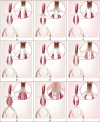Treatment of Hostile Proximal Necks During Endovascular Aneurysm Repair
- PMID: 26798712
- PMCID: PMC4682688
- DOI: 10.12945/j.aorta.2014.13-030
Treatment of Hostile Proximal Necks During Endovascular Aneurysm Repair
Abstract
Endovascular aneurysm repair (EVAR) is a therapy that continues to evolve rapidly as advances in technology are incorporated into new generations of devices and surgical practice. Although EVAR has emerged as a safe and effective treatment for patients with favorable anatomy, treatment of patients with unfavorable anatomy remains controversial and is still an off-label indication for endovascular treatment with some current stent-grafts. The proximal neck of the aneurysm remains the most hostile anatomic barrier to successful endovascular repair with long-term durability. Open surgery for unfavorable necks is still considered the gold standard treatment in contemporary practice, despite the increased mortality and morbidity attributed to suprarenal cross-clamping, particularly in high-risk patients. Evolving technology may overcome the obstacles preventing endovascular treatment of unfavorable proximal neck anatomy; current approaches include purely endovascular as well as hybrid approaches, and generally include strategies that either extend the length of the short neck, move the proximal neck more proximally, or keep the short neck intact. These approaches include the use of debranching techniques, banding, chimneys, fenestrated and branched devices, filling the sac with endobags, endoanchors, and other novel devices. These newer-generation devices appear to have promising short- and midterm results. However, lack of good evidence of efficacy with long-term results for these newer approaches still precludes wide dissemination of endovascular solutions for the hostile proximal neck.
Keywords: Aneurysm; Angulated neck; EVAR; Hostile neck; Short neck.
Figures
Similar articles
-
Conical neck is strongly associated with proximal failure in standard endovascular aneurysm repair.J Vasc Surg. 2017 Dec;66(6):1686-1695. doi: 10.1016/j.jvs.2017.03.440. Epub 2017 Jun 2. J Vasc Surg. 2017. PMID: 28583728
-
Neck diameter and inner curve seal zone predict endograft-related complications in highly angulated necks after endovascular aneurysm repair using the Aorfix endograft.J Vasc Surg. 2018 Mar;67(3):760-769. doi: 10.1016/j.jvs.2017.07.114. Epub 2017 Sep 21. J Vasc Surg. 2018. PMID: 28943010
-
Transperitoneal versus retroperitoneal suprarenal cross-clamping for repair of abdominal aortic aneurysm with a hostile infrarenal aortic neck.Ann Vasc Surg. 2007 Nov;21(6):687-94. doi: 10.1016/j.avsg.2007.07.012. Ann Vasc Surg. 2007. PMID: 17980792
-
Advanced endografting techniques: snorkels, chimneys, periscopes, fenestrations, and branched endografts.Cardiovasc Diagn Ther. 2018 Apr;8(Suppl 1):S175-S183. doi: 10.21037/cdt.2017.08.17. Cardiovasc Diagn Ther. 2018. PMID: 29850429 Free PMC article. Review.
-
Technological Advances to Address the Challenging Abdominal Aortic Aneurysm Neck.Rev Cardiovasc Med. 2023 Feb 24;24(3):70. doi: 10.31083/j.rcm2403070. eCollection 2023 Mar. Rev Cardiovasc Med. 2023. PMID: 39077477 Free PMC article. Review.
Cited by
-
The use of EndoAnchors in endovascular repair of abdominal aortic aneurysms with challenging proximal neck: Single-centre experience.JRSM Cardiovasc Dis. 2019 Apr 24;8:2048004019845508. doi: 10.1177/2048004019845508. eCollection 2019 Jan-Dec. JRSM Cardiovasc Dis. 2019. PMID: 31041098 Free PMC article.
References
-
- Fergany A, Kolettis P, Novick AC. The contemporary role of extra-anatomical surgical renal revascularization in patients with atherosclerotic renal artery disease. J Urol. 1995;153:1798–1801, discussion 1801–1802. - PubMed
LinkOut - more resources
Full Text Sources
Other Literature Sources


